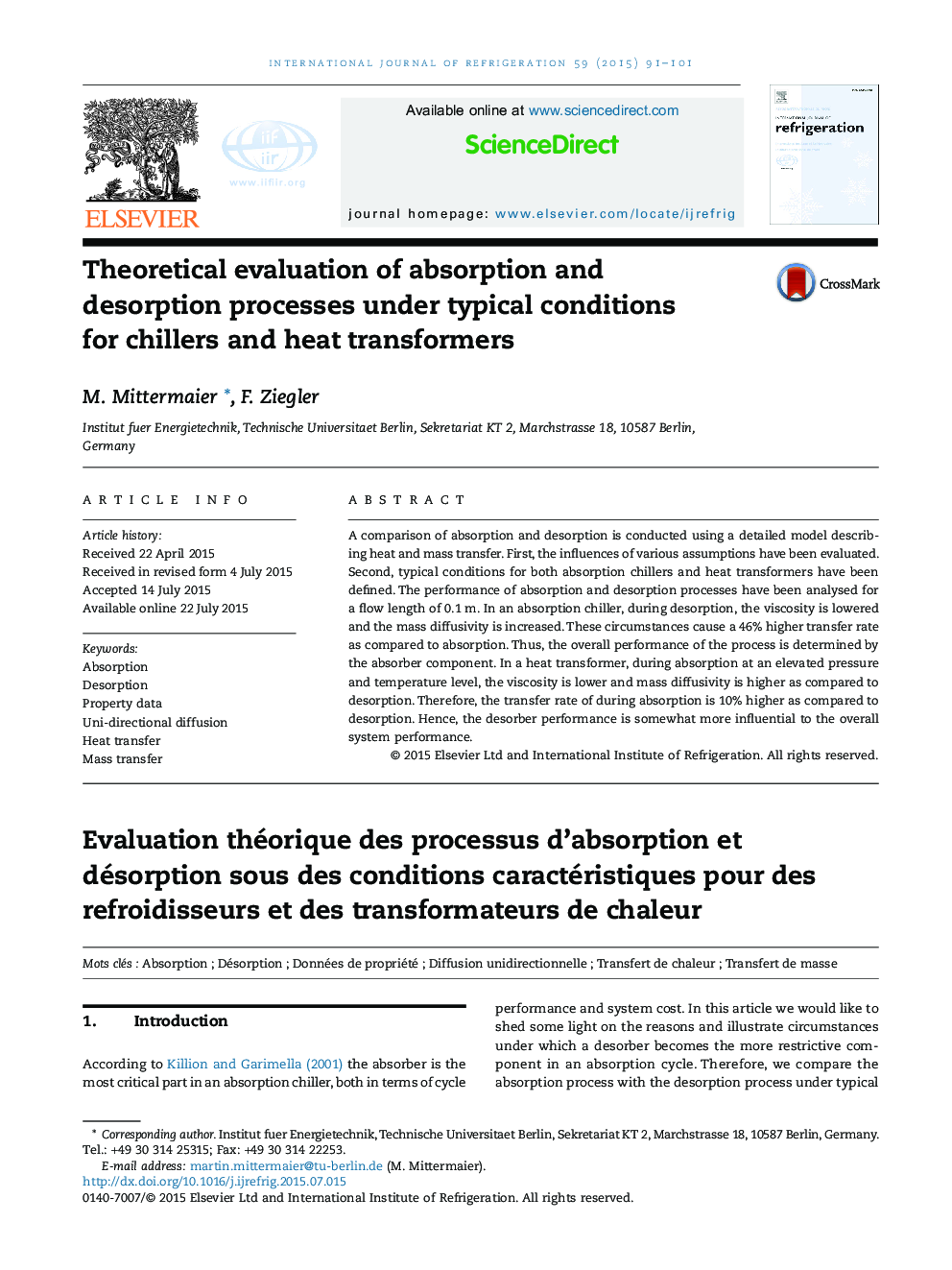| Article ID | Journal | Published Year | Pages | File Type |
|---|---|---|---|---|
| 788611 | International Journal of Refrigeration | 2015 | 11 Pages |
•Comparison of absorption and desorption for absorption chillers and heat transformers.•Absorption chiller: thin film leads to higher transfer rate during desorption.•Heat transformer: favourable properties lead to higher transfer rate for absorption.•Various assumptions have been evaluated to substantiate the effects.
A comparison of absorption and desorption is conducted using a detailed model describing heat and mass transfer. First, the influences of various assumptions have been evaluated. Second, typical conditions for both absorption chillers and heat transformers have been defined. The performance of absorption and desorption processes have been analysed for a flow length of 0.1 m. In an absorption chiller, during desorption, the viscosity is lowered and the mass diffusivity is increased. These circumstances cause a 46% higher transfer rate as compared to absorption. Thus, the overall performance of the process is determined by the absorber component. In a heat transformer, during absorption at an elevated pressure and temperature level, the viscosity is lower and mass diffusivity is higher as compared to desorption. Therefore, the transfer rate of during absorption is 10% higher as compared to desorption. Hence, the desorber performance is somewhat more influential to the overall system performance.
